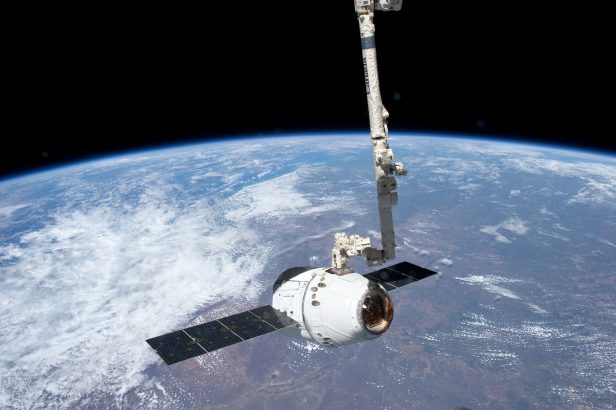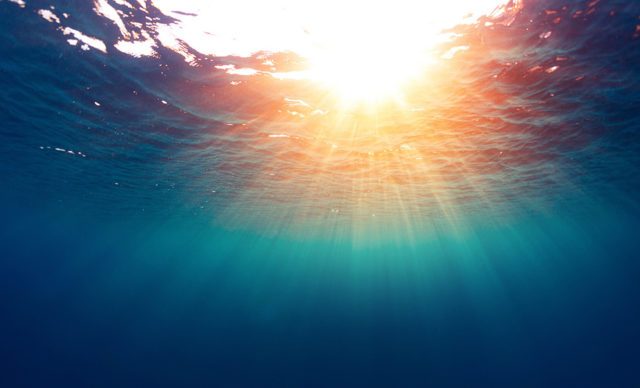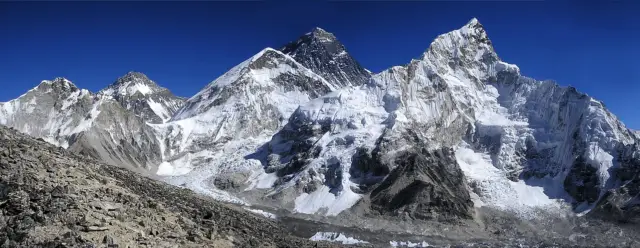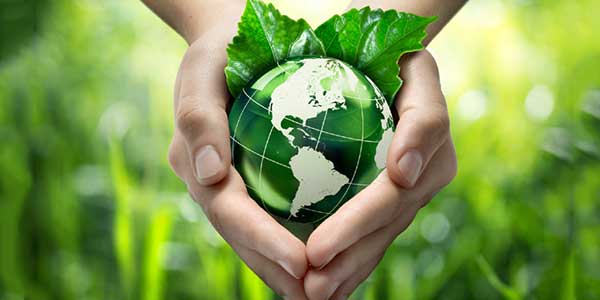Many take it for granted that the Earth cannot surprise them. They suppose they know everything about it… That is why, they tend to focus on space exploration and discoveries made on other planets, or stars in a broad sense.

However, that statement is not conclusive. Our blue planet has many “hidden secrets” that are capable, even, of demolishing fixed ideas that we had as absolute truths about it.
As we are checking over the years, our planet is a place that never ceases to amaze us. We live in such a complex environment that it is impossible to know what happens in each of its corners.
We constantly witness phenomena and miracles that sustain life on our planet. We must become aware of the greatness of our habitat and remember that we do not have a 2nd Earth to turn to if we destroy what we have.
We show you some curiosities of our beloved ‘blue planet’ that you may not know and that will undoubtedly surprise you.
Icy places
We talk about very, very cold places. Only a few hundred kilometers from the Arctic Circle is the city of Oymyakon, Russia, one of the coldest places on Earth. On January 26th, 1926, a temperature of -71.2 °C was recorded.
It is the lowest temperature ever recorded in an inhabited area, as well as the lowest in the Northern Hemisphere. Only lower temperatures have been recorded in Antarctica, (officially the lowest is -91 °C, near the Antarctic mountain massif).
In that city it is so cold here that its inhabitants do not turn off their cars and must heat the earth with a bonfire for days before they can bury their dead.
97% of the Earth’s water is salty
Water is a dominant element on Earth and also a vital resource for the support of life, but the percentage of salt water and fresh water is very different, so much so that the 2nd is undoubtedly a minority.

With this data, we made clear that by nature only 3% of the Earth’s water is sweet. That is precisely what we consume most living beings, including humans, so it is not strange that we have had to resort to artificial means to conserve and increase the availability of such resource.
In this sense, desalination plants have undoubtedly played the role as have purifying plants.
The highest mountains are really large
The summit of Everest is still the highest point in the world compared to sea level, but it is not the furthest from the center of the Earth, a record held by the summit of the Chimborazo volcano. How is this possible? The answer is in the form of the Earth.
Because the Earth is not totally round, the radius of the equator is larger than that of the poles. In other words, when you are at sea level at the equator, you are 21 kilometers farther from the center of the Earth than when you are at sea level at the poles.
This is why Everest, in Nepal, is 6,382.6 kilometers from the center of the Earth, about 2 kilometers farther than the Chimborazo.

The hole in the ozone layer is shrinking
The regenerative capacity of our planet is impressive because, despite all the “punishment” that we have been giving, it has managed to recover quite well in most cases, and the ozone layer is one of the best examples.
We understand by hole in the ozone layer those areas where there is a low concentration of ozone molecules. Initially it was detected that this problem had a higher incidence in Antarctica, but little by little it has been recovering.
A vital element for us, since ozone slows down the entry into the Earth of most of the ultraviolet radiation, absolutely harmful to life.
The larger seas are really deep
The deepest point of the earth’s crust lies at the bottom of the western Pacific, more specifically in the Mariana Trench. Its deepest point, known as the Challenger abyss since it was visited in 1873 by the frigate of the British Royal Navy Challenger, has 11,034 m depth and a pressure of 110,000 kPa (about 1,085 atmospheres). The pit extends for more than 2,550 km in length and an average width of 70 kilometers.
In it, there ha
Scorching places
On the opposite side of the coin is the Valley of Death (United States), a valley that has earned its name after becoming the place with the highest temperatures recorded in history, nothing more and nothing less than 56.7 degrees centigrade, back in the year 1913.
In the scorching Californian valley, there was no shelter, no water, no fans to protect the population. That year, the deaths were counted by dozens, and according to the World Meteorological Organization (WMO), that was the moment in history where most heat was concentrated in a single day.
More than 8 million lightning bolts per day
Are you afraid of lightning? Well, they are very common on Earth, so that according to official sources a day there are about 8.6 million lightning flashes, an impressive figure that allows us to see how “alive” our atmosphere is.
We say this because they occur in the clouds, from where they descend showing that very impressive branched shape.
Rocks that move
In a remote stretch of the Valley of Death, a lake known as ‘Racetrack Playa’, is witness to some of the most attractive mysteries of the natural world. In it you can see rocks moving slowly without any intervention of humans or animals.
Although the winds are very strong in the area, it does not seem to be responsible, as some rocks exceed 300 kg and would require winds of almost 300 km/h to move. Rocks that have irregular surfaces leave grooved grooves while those that show smooth surfaces simply slide.
Tokyo is the most populated city in the world (more than 37.2 million inhabitants) and has more inhabitants than all of Australia. In the 2nd place is Delhi in India with 22.7 million, and in the 3rd place Mexico City and New York with 20.4 million, each.
Star dust
Each year, 40,000 tons of cosmic dust fall on our planet. It is not something that we can observe with the naked eye, but over time, all that dust formed by oxygen, carbon, iron, nickel and other elements find a way to get into our bodies. It is romantic to think that we are actually stardust.
Not all countries have 4 stations
There are regions that only have 2 stations: one dry, where it does not rain, and another rainy, where it rains constantly
The center of the Earth is located 6,000 kilometers below the surface
Once scientists tried to dig as far as possible, and they only reached depth of 12 kilometers.
Boiling rivers
In the depths of the Peruvian Amazon rainforest, in Mayantuyacu, a river flows so hot that the water even boils. According to the legend, due to the heat released by the Great Yacumama Serpent, “the Mother of the Waters”.
The hottest stretch of the river stretches more than 6 kilometers. There, the temperature of the water oscillates between 50ºC and 90ºC, although in some points it can even exceed 100ºC, enough temperature to cause 3rd degree burns in a matter of seconds and even death.
Lakes that explode
No, it is not a science fiction story, the earth also hosts inhospitable places that could end our lives at any time.
Hidden in Cameroon, Rwanda, and the Democratic Republic of the Congo, there are a series of lakes originating from volcanic craters known as the lakes Nyos, Monoun and Kiyu, respectively.
The magma that is under the water of these craters releases carbon dioxide in a continuous way, until the accumulated gas escapes suddenly producing the asphyxia of the fauna and the human beings that are nearby. Such an eruption can even cause tsunamis.
The power of these explosions is so great that some geologists have found near Kivu Lake evidence that shows massive biological extinctions.
We do not know our own world!
It is overwhelming to think that the oceans cover around 70% of the planet and that, currently, we have only explored 5% of its extension. Scientists estimate that there are between 5 million and 100 million species on Earth, but so far we have only identified 2 million of them. We think we know everything, but much remains to be discovered. What a

